10 Low-Maintenance Houseplants for Beginners
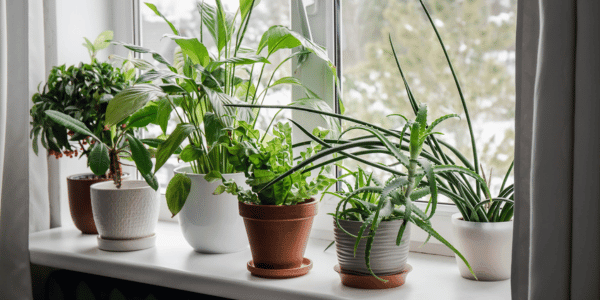
If you’re looking for a way to spruce up your home’s interior design, you can never go wrong with adding a houseplant or two. Ideal for those with limited outdoor space, low-maintenance indoor plants add life to any room. Plus, health experts even believe houseplants have the power to reduce stress and improve sleep. Ready to discover what indoor plants are the top choice for beginners? Here, we share the best houseplants and indoor plant care tips.
Benefits of Indoor Plants
Believe it or not, easy-care houseplants do more than just look good. Scientists have found that the photosynthesis process helps improve the air quality of indoor spaces, making houseplants a natural air purifier. The routine of houseplant care also has many potential mental and physical health benefits. Specifically, taking care of houseplants has been found to:
- Reduce depression
- Lower stress
- Sharpen attention
- Enhance sleep
- Improve fitness
10 Best Houseplants for Beginners
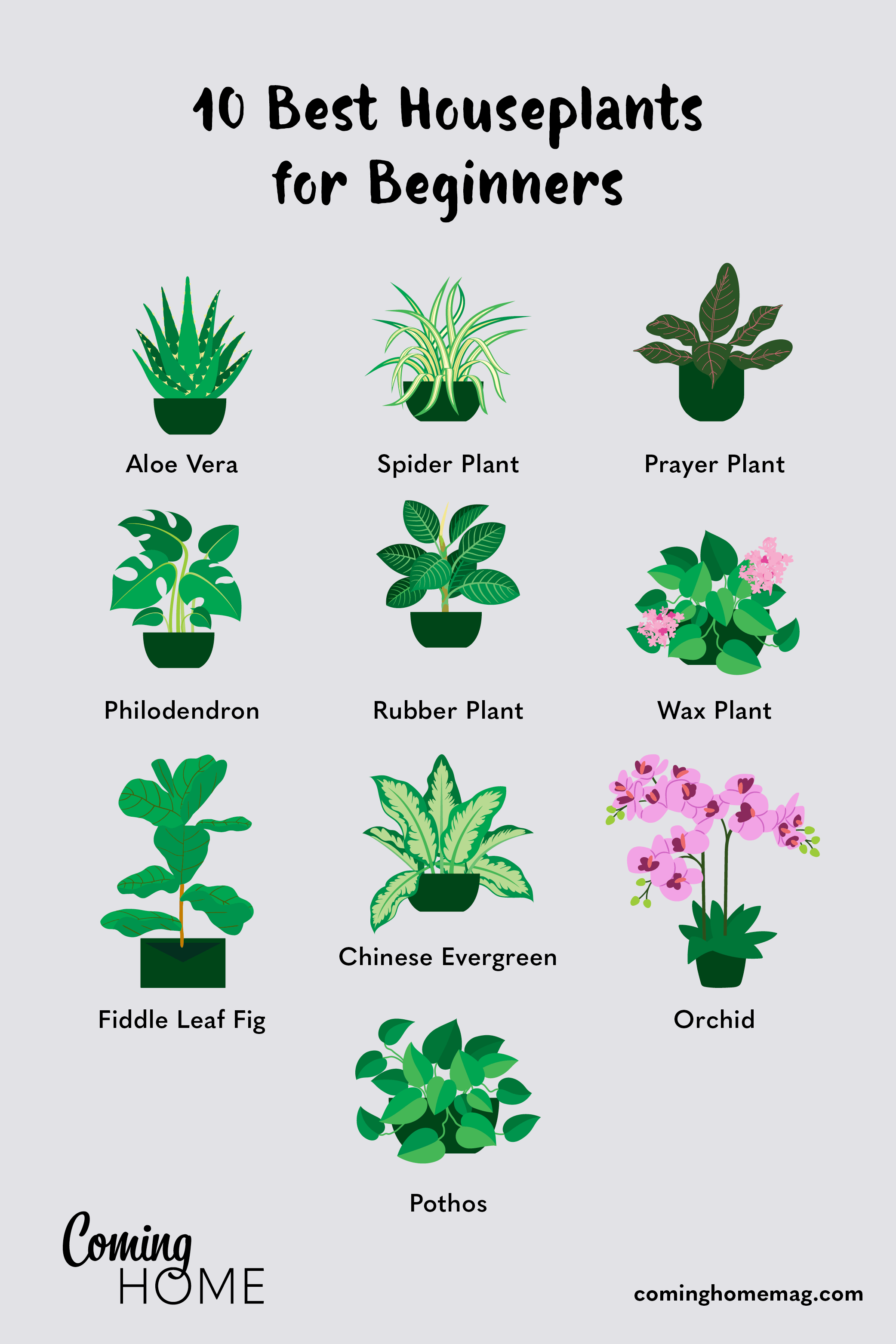
Here are 10 of the best houseplants, along with all the indoor plant care tips you need to keep them alive and healthy.
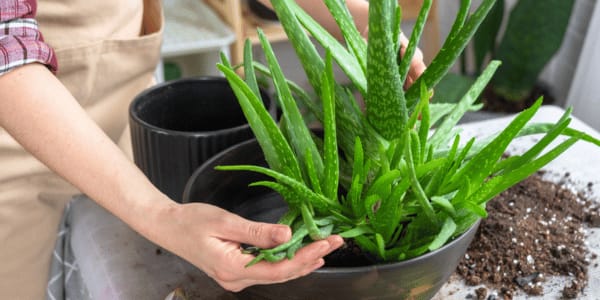
1. Aloe Vera
We all know aloe vera is great for soothing a sunburn, but it makes for wonderful decoration, too. An easy-care houseplant, aloe vera’s unique, sword-shaped leaves need little water to survive, and it has a spot on NASA’s list of the top 10 air-purifying plants.
How to Care for Aloe Vera Plant
Sunlight: Aloe vera plants need consistent bright but indirect sunlight for six to eight hours a day.
Water: Water when the soil is completely dry. If the aloe vera leaves are thinning or appear limp, the plant may be thirsty.
Soil: Plant your aloe vera in sandy soil. The looser soil allows water to drain properly, preventing rotting and promoting growth.
2. Philodendron
Available in multiple varieties, philodendron plants are a low-maintenance, high-quality option for new houseplant owners. With the right upkeep, they’ll grow down the sides of the containers and wrap around windows, draping your home with eye-catching colors and shapes.
How to Care for Philodendron
Sunlight: It’s up to you. Philodendron plants can thrive in environments with a little or a lot of sunlight.
Water: Use a moderate amount of water. If the top inch of your soil is dry, it’s time to grab a watering can.
Soil: For soil, look for loose, nutrient-dense mixtures and fertilize frequently in spring and summer. The more humid the plant environment, the better.
3. Fiddle Leaf Fig
Want to make a statement and achieve a jungle-like feel? Look no further than the iconic fiddle leaf fig. With towering heights and bold, large, wavy leaves, you can get tropical vibes and infuse style and drama into any room.
How to Care for a Fiddle Leaf Fig
Sunlight: Place in front of large east- or north-facing windows that receive a lot of indirect natural light.
Water: In spring, summer, and fall, water consistently as the top inch of soil dries. During winter, it’s OK to be more sporadic.
Soil: Use high-nitrogen soil and repot every spring to accommodate growth.
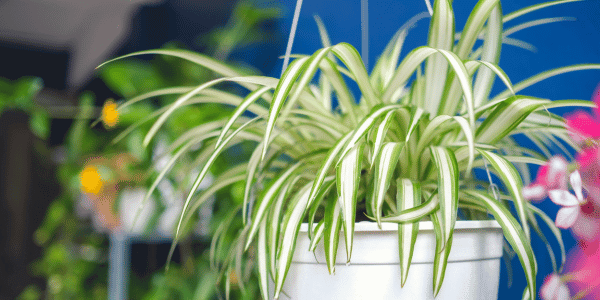
4. Spider Plant
Don’t be scared away by the name! You won’t attract any pests by bringing a spider plant into your home. Instead, spider plants are one of the best pet-friendly houseplants. Earning its name from its hanging stems, these low-maintenance indoor plants have an aesthetic appeal and can tolerate varying conditions.
How to Care for a Spider Plant
Sunlight: Spider plants are some of the best plants for low light, but to get a strong bloom, look for bright, indirect sunlight.
Water: Provide a moderate amount of water as needed.
Soil: Use a potting mix that drains well, and fertilize every two weeks during spring and summer.
5. Rubber Plant
While rubber plants resemble the artificial choices you’ll find in stores, they’re the real deal. One of many hardy houseplants, their large leaves will grow rapidly, and they can live for decades. They’re also a non-toxic option for any furry friends!
How to Care for a Rubber Plant
Sunlight: Bright, direct sunlight is the way to go. For best results, rotate the plant about once a month.
Water: Keep soil moist but not soggy. You can slow down on watering during winter.
Soil: A standard, well-draining soil should treat your rubber plants well.
6. Chinese Evergreen
Not demanding much water and able to tolerate a range of sunlight exposure, Chinese evergreens are some of the best indoor plants for beginners. Pick the color variety of your choice (pink, silver, and yellow are just a few of the shades!) and enjoy beautiful blooms that are easy to care for.
How to Care for a Chinese Evergreen
Sunlight: Partial sunlight, full sunlight, and everything in between work well.
Water: Only water Chinese evergreens when they’re completely dry.
Soil: Use a slightly acidic potting mix that drains well.
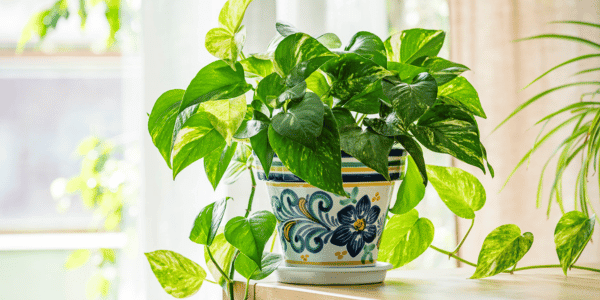
7. Pothos
Pothos are low-maintenance trailing houseplants that are incredibly forgiving. Their vines and heart-shaped leaves can be trained to expand and cover bookshelves and doorways, adding charm and life to your space. As sturdy houseplants, they’ll thrive in various scenarios as long as you give them a good start.
How to Care for Pothos
Sunlight: Low light and indirect light are just fine!
Water: Schedule watering sessions once a week to nurture the long vines.
Soil: Research the right mix for your specific variety, but generally, pathos plants need only standard, well-draining mixes.
8. Prayer Plant
Native to Brazil, prayer plants have leaves that grow and almost pile on top of each other to resemble hands in prayer—but only at night. During the day, the leaves unfold and lay flat to maximize light absorption in a phenomenon called nyctinasty. An ideal low-light indoor plant, a prayer plant’s interesting design and fascinating leaf movement are sure to be a hit.
How to Care for a Prayer Plant
Sunlight: Make sure to avoid direct sunlight, as their patterned leaves can burn with too much heat.
Water: Keep your prayer plants consistently moist, but not wet.
Soil: Find acidic soil mixed with sand, salt, and clay to replicate its native conditions.
9. Wax Plant
Wax plants, also known as wax begonias, grow slowly, rarely needing to be checked on or repotted as they develop to offer dark, fluffed leaves. If you’re looking for something you don’t have to keep your eye on or a nice houseplant for a trial run of care, these are for you!
How to Care for a Wax Plant
Sunlight: Wax plants grow slowly no matter the light, making low light to bright light OK.
Water: The one thing you will want to watch out for is dry soil. Water when necessary to replenish.
Soil: Wax begonias grow best in soilless mixtures. Instead, mix organic materials like peat, bark, and perlite to give your wax plants a home.
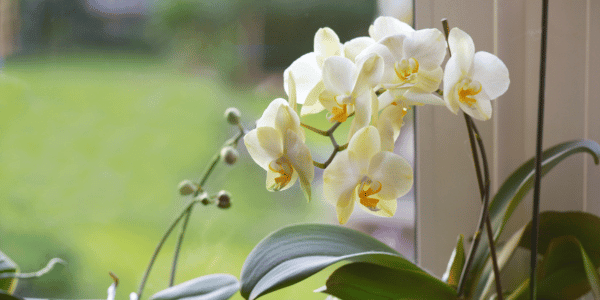
10. Orchids
The beauty of orchids lies in their colorful flowers. With proper care, they can naturally purify the air and create visual interest long-term.
How to Care for Orchids
Sunlight: This will depend on the variety you plant. Some can thrive in shade while others need hours of sunlight.
Water: Once a week year-round, and twice weekly when temperatures rise.
Soil: Look for options with bark, coconut husk, and moss in their ingredients list. Fertilize with a 20-20-20 option every two weeks during active growth (spring, summer) and once a month in all other seasons.
Beyond the Best Houseplants: More Tips for Maximizing Your Indoor Spaces
With this list of the best houseplants and tips for indoor plant care, you can elevate your indoor space. But if you’re looking to totally transform your interior design, check out our article “Exploring Home Decor Styles from Around the Globe.” From the soft, functional minimalism of Danish design to the bright, colorful maximalism of Mexican homesteads, there’s lots of inspiration from countries across the world. Bring new colors, patterns, and materials to your home to make each room its own unique showcase.
Best Houseplants FAQs
How do you clean indoor plant leaves?
Use a sponge or cloth dipped in lukewarm water to clean your indoor plant leaves. Gently wipe each side and clean your sponge or cloth frequently to avoid spreading dust or dirt. Don’t use hot water, as plant leaves are sensitive and can be burned. Cold water should also be avoided, as it can shock your indoor plants and affect growth.
How to repot a houseplant?
Repotting a plant is all about precision and gentleness. Here’s a step-by-step guide to repotting a houseplant:
- Slowly remove the plant from its current pot, tapping the bottom until it slides out.
- Gently loosen the plant’s roots using your hands.
- Carefully remove most of the potting mix surrounding the plant so it can be replaced.
- Pour the new potting mix into a new pot.
- Slowly add your plant to the new potting mix, adding more of the mixture to completely cover.
- Water the newly potted plant.
What are the best houseplants for apartments?
Pothos varieties, spider plants, rubber plants, and aloe vera are great houseplants to add to an apartment.
What are the best plants to improve indoor air quality?
Philodendrons, spider plants, orchids, and pothos varieties have been found to provide healthier indoor air, removing pollutants as they go through photosynthesis.